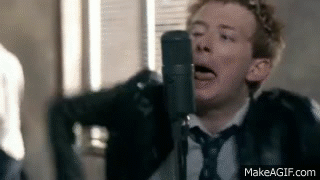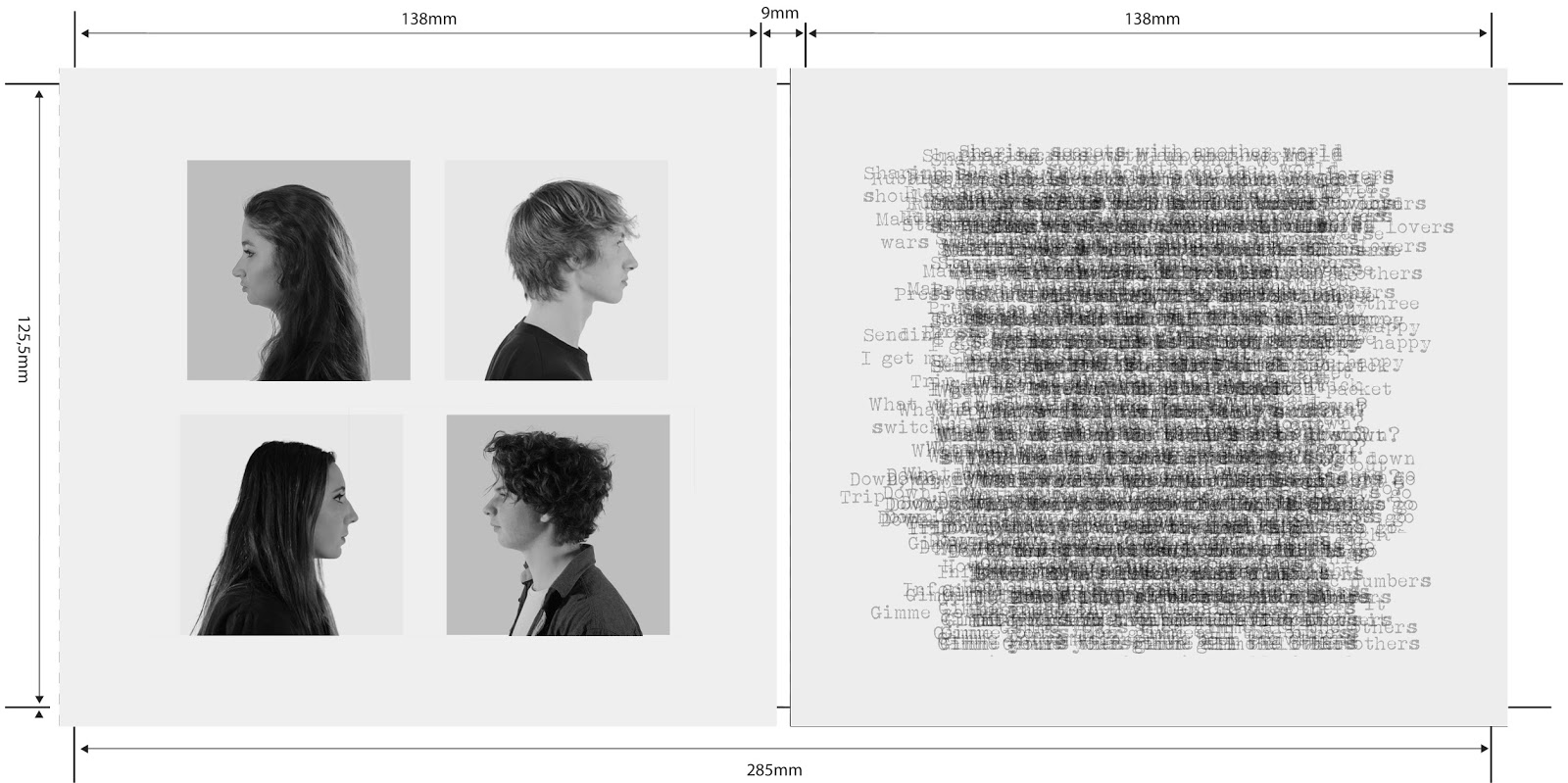Music Video:
In order to support the decisions which influenced the the development of my music video. I considered and incorporated the ideas of many different theorists.
Simon Frith:
In his theory of popular music, Simon Frith suggests that popular music is a construct of three categorisations: performance, narrative and concept. Every music video can be organised into one of these three categories, though often it could be a hybrid between two categories. This is an idea had a major impact on our music video; which would be catergorised as a performance-concept hybrid.

The ideas of performance, narrative and concept are demonstrated quite well in the music video for Just by Radiohead. The video is edited so that the band's performance scene is crosscut between a conceptual narrative scene in which a conversation is presented through subtitles.
Performance:
The performance element of our video was edited in order to fit the themes of the indie genre. We were able to use a rooftop as the setting for our music video and we chose to do so as it is a very conventional and recognisable setting for rock and indie-rock music videos, such as Rooftops by Lost Prophets. By using this location for our video, we were aiming to address our primary audience; fans of indie rock music, immediately.

There were two key ideas driving our performance scene. The first was that we wanted to show a visible progression throughout each stage of the song and the second was that we wanted to integrate our performance scene with our conceptual scene. I decided that this integration was important, as not only did it add to the progression in our video, but it was also common in other indie-rock music videos such as When You Were Young by The Killers. In this video, the characters from the narrative scene pass enter the setting of the performance scene.

 Concept:
Concept:Our conceptual scene utilised two main components: the white backdrop and the jump-cut editing. Our white backdrop created a heavy contrast with the performance scene and created a more surreal image. This, in conjunction with the spontaneous editing, allowed us to create a more disjointed dream-like scene. Including a conceptual element to our music video was one of the ways in which we developed the forms and conventions of the indie-rock genre, as a performance-narrative hybrid is one of the most common structures an indie-rock music video would normally use, as evidenced by the music video for Last Orders by Nothing But Thieves. However, we used our lead singer in both the performance and conceptual scenes, which differs from most indie music videos which do use a performance-concept hybrid structure.
The style of editing we used for our conceptual scene closely follows the theory of music video editing outlined by Carol Vernallis. She proposes that the pace of a music video shifts rapidly and breaks the conventions of continuity editing. Due to the theme of technology in the lyrics of our song, we used this idea during our conceptual scene and edited our sequence to seem jarring and disconnected. These jump cuts allowed us to display the frustration and confusion of the singer in a more creative way. The music video for Fear and Delight by The Correspondents was very influential to this editing technique, as we thought this use of jump cuts would be effective in our own video.

Andrew Goodwin:
Goodwin makes several proposals to the theory of music video editing.
Goodwin argues that music videos are a visual demonstration of the music genre's characteristics. This idea runs throughout our own video through our black and white colour scheme; which is a typical feature of indie-rock music videos.
 |
| Chocolate by The 1975 was one of the music videos which influenced our black and white colour scheme. |
Representation:
The most crucial characteristic of indie music videos is the emphasis on the band and its music. Indie music is a genre in which the quality of the music and reality of the artist are the defining features, so we examined several existing artists to influence the way we represent our band.
The following Padlet explores each of our band member's personas as well as the references we used to construct these personas.
Additionally, this research ties in with one of Goodwin's proposals: that the needs of the record label demand a consistent number of close-ups. This is due to the expectations of the audience that there will be 'beauty shots' or 'visual hooks' of the artist. This influenced the representation of our band greatly, as We included several of these visual hooks for our lead singer, but also included some of our other band members: this is not always the case, as many music videos of bands tend to put a huge emphasis on the lead singer. However, we decided that we wanted to provide a more equal representation of each member of the band, though our lead singer did still have the most close-ups.





Finally, Goodwin's theory suggests that there is a relationship between the visuals of a music video and the lyrics. This is particularly common in pop music videos such as La La La by Naughty Boy, though we decided to use this theory in our own video too. Below is a comparison of the ways in which this relationship has been used.
 |
| This shot plays during the line "I'm covering my ears like a kid". |
 |
| In our own video, this sequence plays during the line "Down, down, down, down, down". |
Summary of Indie Conventions:
Overall, our music video utilised a lot of common indie genre conventions:
- We incorporated a black and white colour scheme.
- We included lots of typical shot types such as close-ups and mid-shots
- Our performance scene used realistic mise-en-scene by including the instruments
- Our fast-paced editing is quite typical
- The setting of a rooftop is very conventional in the indie genre
However, we also developed and challenged these conventions:
- Our music video uses a performance-concept hybrid structure. Most indie music videos use a performance-narrative hybrid structure instead.
- We did not use additional actors to explore a story or narrative. This is often used in indie music videos to create something quite relatable to the audience.
One of our primary influences to the album cover was the album Ramones by The Ramones. A comparison of this album to our own and an explanation of the influential features can be seen below.
The inside panels of our album cover also had their own references. The first panel was influenced by the album covers of Blur and Gorillaz:
The biggest difference between our own inside panel and these album covers is that we chose to use real pictures of our band members rather than drawings of them. We made the decision to challenge these album covers as the indie genre is entrenched in realism, so we thought it more fitting to include real pictures.
Our other inside panel was influenced by the album cover of Joy Division:
Website
The website which had the biggest influence on our own website is that of the Arctic Monkeys. Below is a comparison of their website and our own:
Our website primarily used the conventions of indie artist websites. We included several opportunities for the audience to interact with the more personal side of the band through the band page and the several social media links.
Additionally, we chose to develop the conventions visible on the Arctic Monkeys website. We decided to include more opportunities for purchasing through the addition of a 'Tour' page as well as a greater emphasis on social media; which has strong presence on the front page.
We also included much of our institutional information at the bottom of the page. This is conventional of most artist websites:
 |
| We also included interactive opportunities at the bottom of the page: we have links to the band's social media pages as well as a newsletter |
| This institutional information is very common: the following image is taken from the website of the band The Killers |















No comments:
Post a Comment